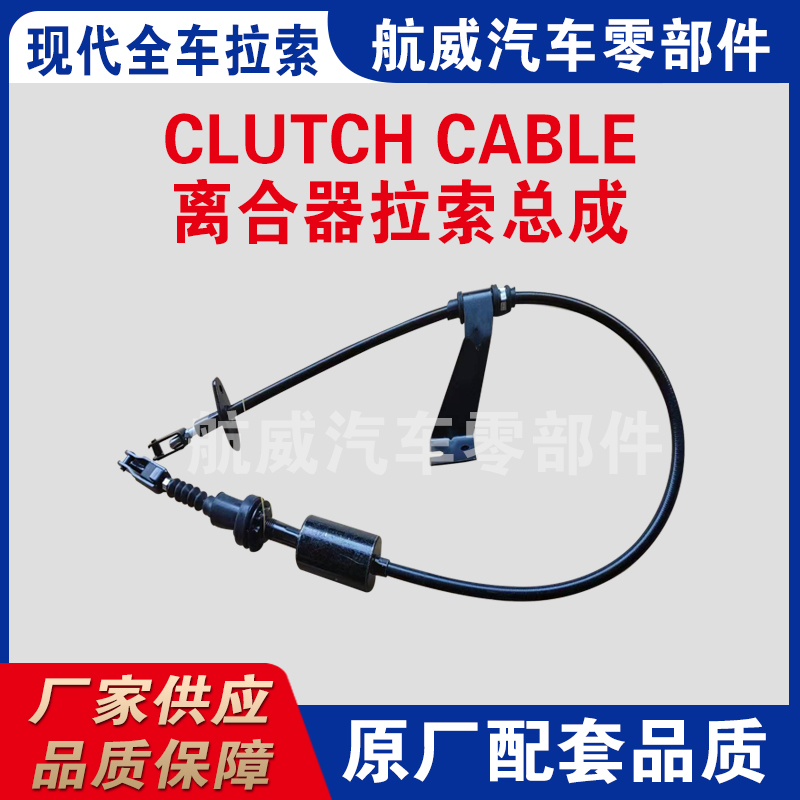Understanding the Function and Importance of Accelerator Cables in Vehicle Performance
Understanding the Importance of Accelerator Cables in Modern Vehicles
The accelerator cable, often overlooked in discussions about vehicle performance and mechanics, plays a crucial role in the operation of modern automobiles. This seemingly simple component is essential for translating the driver's intentions into the vehicle's throttle response, contributing directly to acceleration and overall driving experience. With the evolution of automotive technology, accelerator cables have undergone significant transformations, making them more efficient, responsive, and durable.
So, what exactly is an accelerator cable? In essence, it is a flexible steel wire encased in a protective sheath, connecting the accelerator pedal to the throttle body of the engine. When a driver depresses the accelerator pedal, the cable pulls on the throttle, allowing more air and fuel to enter the engine, which in turn increases engine power and accelerates the vehicle. This mechanical connection is vital for both manual and automatic transmission systems, ensuring that the vehicle behaves as expected when the driver asks for more speed.
One of the primary advantages of accelerator cables is their simplicity. Unlike electronic throttle control systems, which rely on sensors, motors, and complex electronic signals, accelerator cables offer a direct mechanical link between the driver's foot and the engine. However, this simplicity can sometimes lead to complications, particularly when the cable becomes worn, frayed, or stretched over time. Such conditions can result in delayed throttle response, making the vehicle feel sluggish or unresponsive. Therefore, regular inspection and maintenance of the accelerator cable are critical for ensuring optimal performance.
accelerator cable

In recent years, advancements in automotive technology have brought about a shift towards electronic throttle control (ETC) systems. These systems replace the traditional mechanical accelerator cable with electronic sensors that detect pedal position and send signals to the engine control unit (ECU). While ETC systems offer several advantages, such as improved responsiveness and the ability to integrate with other electronic systems like traction control and stability control, they also rely on complex wiring and software. In contrast, the mechanical accelerator cable remains a simpler, more reliable option, especially in older vehicles and certain specialized applications.
Another important consideration when discussing accelerator cables is their role in safety. A malfunctioning accelerator cable can lead to unintended acceleration or difficulty in controlling the vehicle's speed, potentially resulting in hazardous situations. Manufacturers often incorporate safety features, such as cable termination designs that reduce the risk of fraying, or redundancy systems in electronic throttle controls to prevent failure. Nevertheless, the importance of routine checks cannot be overstated, as maintaining the integrity of the accelerator cable is vital for safe vehicle operation.
In conclusion, while the accelerator cable may appear to be a minor component within the larger context of vehicle mechanics, its function is fundamentally important. Whether found in traditional mechanical systems or in harmony with the modern electronic throttle controls, the accelerator cable remains a key player in ensuring a responsive driving experience. As automotive technology continues to evolve, understanding the role and maintenance of such components is essential for both enthusiasts and everyday drivers alike. Regular inspections and timely replacements of worn cables can enhance vehicle performance and safety, allowing drivers to fully enjoy the thrill of the road. Ultimately, the accelerator cable is a testament to the intricate connection between driver intention and automotive response, reminding us of the fundamental mechanics that underpin our driving experiences.
-
Upgrade Your Control with Premium Throttle CablesNewsAug.08,2025
-
Stay in Control with Premium Hand Brake CablesNewsAug.08,2025
-
Experience Unmatched Performance with Our Clutch HosesNewsAug.08,2025
-
Ensure Safety and Reliability with Premium Handbrake CablesNewsAug.08,2025
-
Enhance Your Vehicle with High-Performance Clutch LinesNewsAug.08,2025
-
Elevate Your Ride with Premium Gear CablesNewsAug.08,2025
